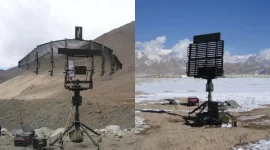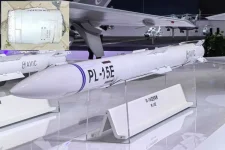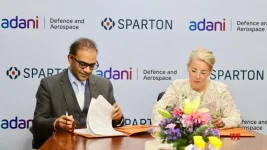An advanced Chinese-manufactured PL-15E Beyond Visual Range Air-to-Air Missile (BVRAAM), found largely undamaged in India's Punjab state, has become the subject of intense global scrutiny.
Following recent hostilities between India and Pakistan, this recovery has prompted requests for information from several nations, including the Five Eyes intelligence alliance (United States, United Kingdom, Canada, Australia, and New Zealand), Japan, and France.
Adding to this international interest, Taiwan has now also reportedly requested access to detailed information regarding the sophisticated Chinese weapon. This widespread global attention highlights the significant strategic value of the recovered missile and its potential to influence air combat capabilities and defence strategies across the Indo-Pacific.
The PL-15E missile, an export version of China’s advanced PL-15, was found in a rural area of Hoshiarpur, situated roughly 100 kilometres from the India-Pakistan border.
It is believed that the missile was deployed by Pakistan Air Force (PAF) J-10C or JF-17 Block III fighter aircraft during an unsuccessful operation targeting Indian Air Force (IAF) positions.
Crucially, the missile's vital components, including its propulsion mechanism, datalink, inertial reference unit, and its active electronically scanned array (AESA) radar seeker, were found intact.
The missile showed no signs of having exploded, leading to theories that it may have malfunctioned, run out of fuel, or been disabled by Indian electronic warfare measures. This provides a rare chance to examine advanced Chinese missile technology up close.
Developed by the Aviation Industry Corporation of China (AVIC), the PL-15E is a long-distance BVRAAM. It reportedly has an operational range of 145 kilometres, is powered by a dual-pulse solid-propellant rocket motor, and can achieve speeds greater than Mach 5 (five times the speed of sound). The missile’s AESA radar seeker and two-way datalink allow for highly accurate targeting and the ability to receive updates during flight.
These features make it a central element of China's air power strategy and a considerable challenge to contemporary fighter aircraft.
The retrieval of such a technologically advanced weapon, particularly with its electronic counter-countermeasures (ECCM) module and guidance software intact, has placed India in a key position within international defence intelligence circles.
Concerned by China's expanding military strength, the Five Eyes alliance was among the initial groups to show interest in the recovered PL-15E.
For the United States, analysis of the missile’s AESA seeker and datalink is particularly valuable, potentially offering crucial knowledge for developing strategies to counter Chinese air-to-air capabilities, especially relevant to scenarios in the Taiwan Strait or the South China Sea.
Japan, a significant ally in the Indo-Pacific, also seeks information to strengthen its own defence preparedness against Chinese air forces, which operate aircraft like the J-20 and J-10C equipped with the PL-15.
France, a key defence partner for India and supplier of its Rafale aircraft, is interested in the data to maintain the Rafale's technological edge. Information from the PL-15E could influence future upgrades to the Rafale's Meteor missile system and its electronic warfare capabilities.
Taiwan's recent request for information introduces a further significant element to this development. As a nation directly facing military pressure from China, Taiwan is highly motivated to understand the full capabilities and potential weaknesses of the PL-15E. This missile, when integrated with China’s J-20 stealth fighters, represents a direct threat to Taiwan's air defence systems.
Access to insights from the recovered missile could significantly aid Taiwan in developing effective countermeasures or in refining its own air-to-air missile technologies.
Taiwan's pursuit of this information is consistent with its wider strategy of forming international partnerships to address China's growing influence in the region.




